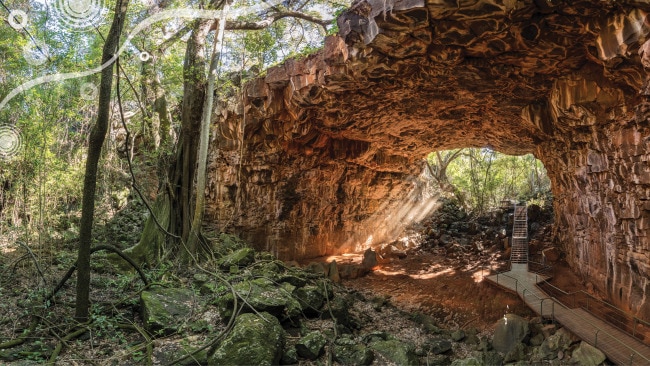How to live more sustainably in 2019
Most people assume eco living comes with a hefty price tag. But there are actually ways to live sustainably in ways that cost you and the Earth a lot less.

Not long ago, big was best when it came to the homes we built. But the tides have turned against those hulking, energy-chugging McMansions. Perhaps now more than ever, we want to live a little more humbly, do our bit for the planet and cut the cost of living in the process.
Living green, eco-minded, sustainably — whatever you want to call it — doesn’t mean taking extreme measures like disconnecting from the grid and joining a commune (although that’s perfectly acceptable, too). New homes can include all the mod cons and leave a smaller carbon footprint, too. Whether you’re starting from scratch or renovating, here are some of the best ways to live more efficiently in 2019, cutting household expenses at the same time. We call that a win-win.
LIVE A LITTLE SMALLER
Big houses are expensive to run. And they cost the earth, too.
Alan Miller, SA development director from real estate development company Peet, says modestly-sized homes require fewer materials to construct and less energy to run and maintain.
“We focus on very efficient land use — we’re talking homes down to 55sq m,” he says. “The whole approach is to avoid urban sprawl where people are taking big lots of land and building a great big house on it. Our approach is small and compact design with very efficient use of space. We make sure every room has access to natural light and ventilation.”
Designing small spaces that maximise natural light and natural ventilation requires careful planning but will drastically cut the cost of running the home.
INTRODUCING PASSIVE DESIGN
Imagine living in a house that doesn’t require heating or cooling all year round and doesn’t break the bank just to run. Passive design considers orientation, spatial zoning, thermal mass, ventilation, insulation, shading and glazing to harness the natural environment to keep the house cool in summer and warm during winter. It’s common sense design, really.
Good orientation (typically north-facing in Australia) will welcome the sun in winter while receiving shade to walls and windows in summer. The roof should be heat-reflecting or even a green landscaped design to present heat absorption. Insulation and double glazed windows also reduce heat gain in summer and heat loss during colder winter months — single pane windows offer almost no insulation and can be responsible for the loss of up to 40 per cent of your home’s heating energy, and up to 87 per cent of your home’s heating gain.
While the German design standard, Passivhaus, has been around since the late 1980s, its design principles have become popular in Australia only recently. Some master-planned communities, such as Googong located 16km from Parliament House in Canberra, encourage passive design and offer display homes which have been built according to HIA Greensmart principles.
GREENER LIVING SPACES
Going green in the home can mean different things for different people. For homeowners, it might mean reducing the number of single-use plastics in the kitchen and bathroom, like opting for reusable wax food covers instead of cling film, reusable coffee pods like Podsta and using innovative products in the fridge like Swag, a clever little bag that helps keep fruit and vegetables fresher so you minimise food wastage.
Tracey Bailey, founder of Biome eco stores says she has seen a dramatic change in the way people view sustainable living over the past 15 years.
“What was once deemed as a way of living for the minority that truly cared about their impact on the environment, is now turning into a necessity for everyone,” she says. “We have experienced a strong rise in consumer interest in plastic-free products, specifically ones that reduce single-use plastic waste such as produce bags, shopping bags, food wraps, KeepCups, water bottles and straws.”
Ms Bailey says swapping to natural alternatives helps reduce your exposure to the harmful synthetic chemicals in everyday things like body care and cleaning products, and can also reduce household expenses.
“Living a sustainable lifestyle can save you money by swapping single-use items for reusable products such as swapping to a reusable razor, refilling a reusable water bottle with water from the tap instead of purchasing bottled water and reducing food waste,” she says.
For more drastic changes to the home, swap taps for more water-efficient models, install energy-efficient lighting (LED is your best bet), heating, cooling and water systems (opt for water-efficient showerheads or toilets and thermostat-controlled water heating).
Replace energy-guzzling appliances with machines certified with the highest energy star rating you can find. Smart plugs can turn off those things that you don’t use but keep plugged in (like televisions, phones and laptops) so you don’t have to physically turn them off at the switch (because who has the time!). For people who forget to turn off lights, smart technology like Philips Hue uses sensors to automatically turn on and off in each room — you’ll feel like a magician as you glide throughout the home.
For new homeowners and builders, a green home might involve choosing non-toxic, low or no VOC (volatile organic compounds) materials that are responsibly sourced, recycled or recyclable.
“Everything we do in our projects in South Australia is all light-weight construction,” Mr Miller says. “We reduce the need for materials with higher embodied environmental energy light steel and concrete on upper levels. The kind of materials we use are plantation timber which is renewable and lightweight aerated concrete.”
Choosing top-quality materials and timeless design features in the kitchen or bathroom will mean they last longer. Bottom line: Your home should be built to last, and be loved, for decades.
TRANSFORM THE BACKYARD
Last year, a Choice survey revealed electricity bills are the biggest worry for Australian households. Solar panels and solar roof tiles (everyone from Aussie company Bristile Roofing through to Teslar are making them now) are a smart way to decrease your environmental footprint while cutting electricity bills at the same time. Although the initial investment can be hefty, solar panels generally pay for themselves after five years. Independent websites like Choice offer a simple explanation of the various factors to take into consideration to determine if solar is a good idea for your situation. Some housing developments, like Newhaven in Tarneit, Victoria, are built with solar panels included in house and land packages.
A water tank is another investment that can cut everyday costs — Sydney Water estimates collecting your own water could save up to $200 per year. Rainwater tanks can provide pristine drinking water as well as flushing toilets or running washing machines. Some developments provide access to recycled water for watering gardens, rather than using precious drinking water.
Changes can also be smaller and cheaper, too, like reducing your waste and carbon emissions by building a compost or growing your own herbs and vegetables. Justin Bonsey from Compost Revolution says composting at home “couldn’t be easier” and helps the environment more than people might think.
“If not composted, organic waste is sent to landfill, where it sits for decades generating methane — a greenhouse gas 25 times more potent than CO2 — as it very slowly decomposes over time,” he says.
“Composting eliminates needless landfill and greenhouse gases, turning a rich resource into rich soil and fertiliser for your garden and pot plants.”
Set up a small kitchen scraps bin on the counter (Polder Kitchen Composter gets our vote for design) and opt for a bigger compost bin that suits your space.
“Composting used to be outdoors only but now tumblers, worm farms, and bokashi fermentation mean it can be done indoors, outdoors, or on balconies with very little space, even on concrete,” Mr Bonsey says.
And what to do with that compost? Build a veggie patch, of course. Raised planter beds with self-watering systems like Vegepods or Glowpear are a good solution for people who dream of eating their own vegetables and herbs but lack time, space or a green thumb. Landscaping should favour native plants which require less water to thrive. Planting efficient water gardens is made simple at master-planned housing developments like the beachside community Shorehaven in Alkimos WA, where homeowners are encouraged to purchase native garden beds on their land lot.


